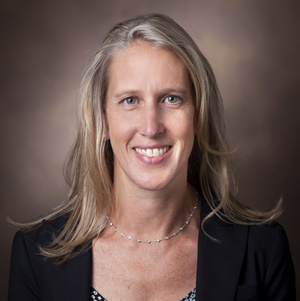Researchers from Vanderbilt’s Division of Nephrology and Hypertension have identified an under-studied characteristic that may have a protective effect on end-stage kidney disease (ESKD) risk among vulnerable populations.

The study, led by Devika Nair, MD, MSCI, assistant professor of Medicine within the Division of Nephrology and Hypertension, found that adults who self-identified as Black and reported high levels of spiritualty had a statistically significant reduced risk for developing ESKD — independent of demographics, other psychosocial factors and lifestyle behaviors.
The study analyzed data from 76,443 adults in the Southern Community Cohort Study (SCCS), an ongoing prospective cohort of individuals of low socioeconomic status recruited across 12 states in the Southeastern United States. Eighty-six percent were recruited from community health centers, and approximately 40% were without insurance.
Loren Lipworth, ScD, research professor in the Department of Medicine, associate director of the Division of Epidemiology and co-investigator of the SCCS, says this population has historically been understudied in previous epidemiologic research.

“This was an important population for us to study, because individuals in our cohort are at high risk for ESKD, and because spirituality has previously been associated with improved health outcomes among individuals of low socioeconomic status,” said Lipworth.
Previous research supports that those who identify as Black and have limited economic resources are disproportionately burdened with ESKD and turn to spirituality to cope with distress. As a result, investigators hypothesized that spiritual beliefs and practices may have a protective effect on disease risk in this population.
“It’s very unusual to have such a large data set with both patient-reported and clinical data from such a medically underserved population,” Nair said.
“We think a lot about population health, but sometimes we focus on individuals who already receive regular care within large health systems. To truly make population health equitable, patient-level data we obtain must be representative of the most vulnerable populations we serve.”
Upon entry to the cohort, participants were asked questions about their medical histories, health behaviors, moods, spiritual beliefs and religious practices, including how frequently they attended religious services, whether belief in a higher power provided them strength and whether they considered themselves spiritual.
Nair and colleagues found that high levels of spirituality in Black participants resulted in a 20% decreased risk for ESKD.
The findings were consistent despite differences in age, income, gender, frequency of depressive symptoms and size of social network.
Nair said that this suggests that spirituality — of no particular religion — may protect against ESKD risk through biological or behavioral mechanisms.
While the protective effect was only significant among Black participants, Nair cautions health care providers not to attribute the results to a biological difference between Black and white participants.
“We know that race is a social construct,” she said. “A lot more attention is being given to how we use race as a variable in biomedical research, and thought leaders in the field have called for a greater attention to aspects of an individual’s culture when we discuss race. This cohort provided a unique opportunity to test the effects of an under-studied aspect of culture: spiritual beliefs and religious practices.”
The cohort’s data did not allow for testing of mechanisms that explain the investigators’ findings, but Nair hypothesizes that individuals who reported a greater degree of spirituality may have also had decreased levels of inflammatory markers or more frequent healthy self-management behaviors, such as medication adherence, tobacco avoidance or increased physical activity.
Though spirituality was not more predictive of ESKD risk than traditional biologic risk factors, such as diabetes or hypertension, Nair hopes these results encourage medical professionals to think about their patients’ lives outside of the hospital — something that is not always considered when creating treatment plans.
“Thinking about questions like this forces us as investigators, clinicians and policymakers to really consider the person, and not just the patient, in front of us,” Nair explained.
“Individuals at risk for kidney disease belong to some of our most vulnerable groups, and individuals who live with advanced kidney disease face a life-limiting, serious illness.”
Nair refers to The Joint Commission, which considers a spiritual assessment a quality metric for person-centered chronic disease care, for guidance on appropriately implementing spirituality or faith into a patient’s care plan.
“When done thoughtfully, inquiring about the comforting role spirituality or faith may play in a patient’s life may be not only appropriate but also welcomed, particularly during conversations related to disease self-management or end-of-life care.”












